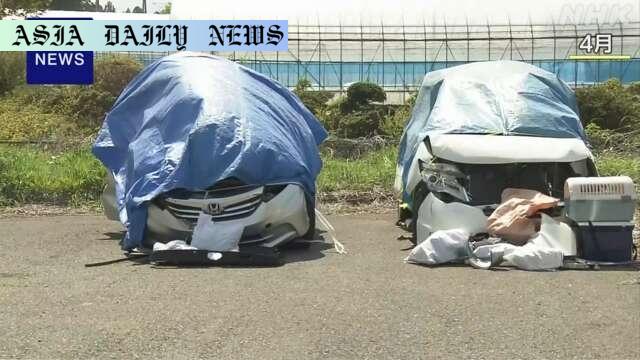wrong-way driving: Japan’s transport ministry designates 190 priority areas on expressways to mitigate dangerous wrong-way driving incidents.

Japan’s Comprehensive Response to Wrong-Way Driving
The Japanese transport ministry is undertaking significant steps to address the alarming issue of wrong-way driving on its expressways. Recent statistics underscore the urgency of this problem, with 220 documented cases of wrong-way driving occurring on Japanese expressways in 2024 alone. To curb these dangerous incidents, the ministry has implemented a decisive strategy that prioritizes safety. Approximately 190 interchanges and expressway rest stops across the nation have been identified as high-risk zones and will be equipped with preventive measures.
Lessons Learned from Past Accidents
Among the 220 incidents in 2024, one particularly severe case occurred in April on the Tohoku Expressway in Tochigi Prefecture. This tragic multi-vehicle accident highlighted the devastating consequences of wrong-way driving, prompting the need for immediate and effective countermeasures. The government has since analyzed similar cases and prioritized interchanges resembling the one involved in the April Tohoku Expressway incident, ensuring tailored interventions are introduced to prevent repeat occurrences.
Focused Safety Interventions
The ministry and expressway operators have devised a thoughtful approach to safety enhancements. Speed bumps, a proven measure to alert inattentive or disoriented drivers, will be installed in the designated areas. These modifications are also targeted at locations with a history of fatal accidents or areas where repeated wrong-way driving incidents have been recorded. The implementation plan is designed to ensure a systematic rollout of these safeguards, with an emphasis on preventing further accidents and saving lives.
Nationwide Efforts for Safer Roads
This initiative demonstrates Japan’s commitment to road safety and its broader national vision of reducing traffic fatalities. By addressing both human error and infrastructure vulnerabilities, these measures aim to create a safer environment for all road users. The collaborative efforts between the ministry and expressway operators represent a forward-thinking and integrated approach to enhancing national transportation safety.
Anticipated Impact and the Road Ahead
With the implementation of these measures, Japan sets a precedent for handling road safety challenges. The prioritization of vulnerable expressway areas, combined with data-driven decision-making, positions the country as a global leader in transportation safety innovation. Although these efforts mark significant progress, continued attention to monitoring, driver education, and technological advancements will be crucial in further reducing wrong-way driving incidents.
Commentary
Addressing Wrong-Way Driving Effectively
The issue of wrong-way driving on expressways is a serious concern that demands immediate and comprehensive action. Japan’s ministry of transport has taken commendable steps in tackling this problem head-on by analyzing accident data and identifying high-risk zones. This data-driven approach ensures that the limited resources allocated for road safety interventions are used effectively and efficiently.
The Importance of Preventive Measures
One of the most striking elements of this initiative is the inclusion of preventive measures such as speed bumps. Such measures serve as physical and psychological alerts, prompting drivers to reevaluate their trajectory before a mistake becomes a tragedy. They act as a low-cost, highly effective solution that aligns with the ministry’s broader goal of making expressways safer without posing undue inconvenience to drivers.
Long-Term Commitment to Safety
This initiative also underscores the importance of a long-term commitment to infrastructure safety. Road safety is not just about responding to accidents but also about preventing them through proactive measures. By focusing on the root causes and addressing them systematically, Japan can not only reduce wrong-way driving incidents but also create a culture of safety that prevents other types of accidents.
A Global Lesson in Traffic Safety
Japan’s efforts serve as a lesson to other nations grappling with similar challenges. It showcases the power of collaboration between government agencies and infrastructure operators, demonstrating that targeted actions can yield significant results. Other countries can draw inspiration from Japan’s innovative approach and consider adopting similar strategies to enhance road safety.


